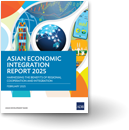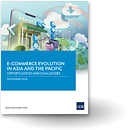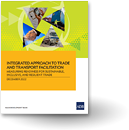Low interest rates: Not so good news for central banks
The savior becomes the enemy. Central banks are most upset when they are accused that the low interest rates environment they engineered before the global financial crisis was one of the causes of the crisis.
This whole notion sits uncomfortably with them. It directly confronts the monetary policy orthodoxy that—low interest rates as a stabilizer or stimulant of short-term business cycles—the solution—can potentially be a problem.
Still this attack should not come as a total surprise. Irving Fisher and Friedrich Hayek writing in the 1930s, and Charles Kindleberger, in his review of historical crises that first appeared in 1978, highlighted easy monetary conditions as classical ingredients in boom-bust business fluctuations.
In a new paper on 10 Asian economies1, we study whether low interest rates are indeed bad for the economy. In particular, we look at bank risk-taking behavior, that is, whether during the periods of low interest rates, banks behave more aggressively by taking on more risk.
Banks can take on more risk in numerous ways. First, low interest rates boost prices and collateral values of assets on banks’ balance sheet, which modify banks’ estimates of default probability, losses in case of default, and overall volatility of bank returns. Second, low interest rates influence banks to search-for-yields to boost their earnings. Third, low interest rates reduce the expectations of a large downside risk. Fourth, low interest rates raise adverse selection in the credit markets by reducing banks’ incentive to properly screen loan applications.
Low interest rates per se are not the point of contention in the literature, what is key is to differentiate whether the interest rates are too low. To do this, interest rates are measured against a benchmark. We use two benchmarks based on natural interest rates, and a simple Taylor rule, that determines interest rates in relation to actual and target inflation rates, as well as actual and potential output.
There are also various ways to measure bank risk. For robustness, we use four indicators: idiosyncratic risk; non-performing loans to total loans; z-score; and volatility of return on assets.2
A bank risk determinant and monetary policy transmission mechanism model using dynamic general methods of moments is estimated to study the relationship of interest. We collect publicly listed bank information together with various macroeconomic variables, bank specific variables, and regulatory indexes from 2000 to 2011.
Our results show that when interest rates are “too low”—lower than a benchmark—bank risk increases, which implies that they can harm the economy. The results confirm findings on the US and the euro area. And they are robust to the different bank risk measures, and other factors, which may influence banks’ risk-taking behavior, such as, general economic conditions, bank specific characteristics, country specific market risk, and regulatory environment.
These results point to three main policy considerations. First, the conduct of monetary policy, in particular, the setting of interest rates does not seem neutral to the financial stability goal. Second, more importantly, this suggests a greater role of macroprudential policy focusing on possible excesses in finance and its related areas, even during periods of benign inflation rate when interest rates are usually kept low.
Finally, as the Asian economies are not well insulated from the loose monetary policy of the advanced economies, it is important for policy makers to allow the exchange rates to move more flexibly, especially in level terms. There will be periods when choices made by policy makers—such as allowing interest rates to fall too low—not only fuel risk-taking, but may also interfere with the pursuit of domestic stabilization goals.




